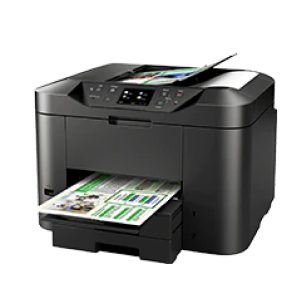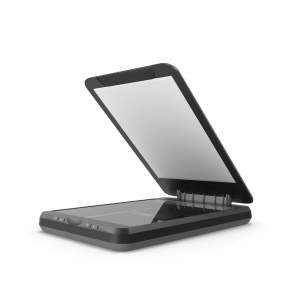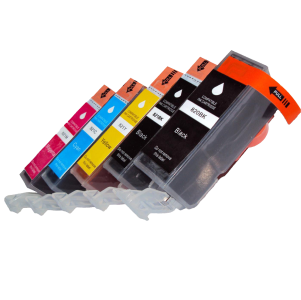Printers, Scanners, Supplies & Cartridges, Barcode Scanner | Your One-Stop Solution
In today’s fast-paced world, printers, scanners, and barcode scanners have become indispensable tools for both personal and professional use. Whether you’re printing documents at home, scanning important files at the office, or managing inventory with barcode scanners, having the right equipment and supplies is crucial for efficiency and productivity. This comprehensive guide will walk you through everything you need to know about printers, scanners, supplies, cartridges, and barcode scanners, helping you make informed decisions for your needs.
Printers – Choosing the Right One for Your Needs
Printers are one of the most commonly used devices in homes and offices. With so many types and models available, selecting the right printer can be overwhelming. Here’s a breakdown of the most popular types of printers and their uses:
Inkjet Printers
Inkjet printers are versatile and widely used for both text and photo printing. They work by spraying tiny droplets of ink onto paper, producing high-quality prints with vibrant colors.
- Best For: Home users, small offices, and photo enthusiasts.
- Pros: Affordable, excellent color printing, compact size.
- Cons: Slower printing speeds, higher cost per page compared to laser printers.
Key Features to Look For:
- Print Resolution: Measured in DPI (dots per inch), higher DPI means better print quality.
- Connectivity: Look for Wi-Fi, Bluetooth, or USB connectivity options.
- Ink Cartridge Compatibility: Check if the printer supports third-party or refillable cartridges to save costs.
Laser Printers
Laser printers use toner powder and a laser beam to produce sharp, smudge-free text and graphics. They are known for their speed and efficiency.
- Best For: Offices and businesses with high-volume printing needs.
- Pros: Fast printing, low cost per page, durable prints.
- Cons: Higher upfront cost, less ideal for photo printing.
Key Features to Look For:
- Print Speed: Measured in PPM (pages per minute), higher PPM is better for large volumes.
- Duplex Printing: Automatic double-sided printing saves paper and time.
- Toner Yield: Higher yield cartridges reduce the frequency of replacements.
All-in-One Printers
All-in-one printers, also known as multifunction printers (MFPs), combine printing, scanning, copying, and sometimes faxing capabilities into a single device.
- Best For: Home offices and small businesses looking for space-saving solutions.
- Pros: Versatile, cost-effective, reduces the need for multiple devices.
- Cons: May have limited individual functionality compared to standalone devices.
Key Features to Look For:
- Scanning Resolution: Higher resolution ensures better quality scans.
- Paper Handling: Look for automatic document feeders (ADFs) for multi-page scanning.
- Mobile Printing: Support for apps like Google Cloud Print or Apple AirPrint.
Wireless Printers
Wireless printers allow you to print from multiple devices without the need for physical connections. They connect via Wi-Fi or Bluetooth, offering greater flexibility.
- Best For: Modern homes and offices with multiple users.
- Pros: Convenient, reduces cable clutter, supports mobile printing.
- Cons: Requires a stable Wi-Fi connection, may have slower speeds compared to wired printers.
- Network Compatibility: Ensure compatibility with your existing network.
- Mobile App Support: Check for dedicated apps for easy printing from smartphones.
- Security Features:Look for encryption and password protection to secure your prints.
Photo Printers
Photo printers are specialized inkjet printers designed to produce high-quality photo prints. They often support larger paper sizes and use advanced ink technologies.
- Best For: Photographers and hobbyists who need professional-quality prints.
- Pros: Exceptional color accuracy, supports various paper types.
- Cons: Expensive ink, limited to photo printing.
- Ink System: Look for printers with multiple ink cartridges for better color accuracy.
- Paper Compatibility: Supports glossy, matte, and specialty photo papers.
- Borderless Printing: Allows for edge-to-edge photo prints.
Key Features to Look For:
Scanners – Digitizing Your World
Scanners are essential for converting physical documents and photos into digital formats. Whether you’re archiving old photos or managing paperwork, a good scanner can save you time and effort.
Flatbed Scanners
Flatbed scanners are the most common type, featuring a flat glass surface where you place documents or photos for scanning.
- Best For: Scanning photos, books, and delicate materials.
- Pros: High-quality scans, versatile, easy to use.
- Cons: Bulky, slower for multi-page documents.
- Optical Resolution: Higher resolution ensures better detail in scans.
- Color Depth: Measured in bits, higher color depth means more accurate color reproduction.
- Scanning Speed: Faster speeds are better for large volumes.
Key Features to Look For:
Sheetfed Scanners
Sheetfed scanners are designed to quickly scan multiple pages at once. They automatically feed documents through the scanner, making them ideal for offices.
- Best For: High-volume document scanning.
- Pros: Fast, compact, efficient for multi-page documents.
- Cons: Not suitable for books or fragile items.
- ADF Capacity: Higher capacity reduces the need for frequent reloading
- Duplex Scanning: Allows for double-sided scanning in a single pass.
- Document Size Compatibility: Supports various paper sizes, including legal and A3.
Key Features to Look For:
Portable Scanners
Portable scanners are lightweight and compact, making them perfect for on-the-go scanning. They are often battery-powered and connect to devices via USB or wireless.
- Best For:Travelers, remote workers, and students.
- Pros:Convenient, easy to carry, versatile.
- Cons:Limited functionality compared to flatbed scanners.
- Battery Life:Longer battery life ensures uninterrupted scanning.
- Connectivity: Wireless options like Wi-Fi or Bluetooth for easy file transfer.
- Scanning Modes: Supports color, grayscale, and black-and-white scanning.
Key Features to Look For:
High-Volume Scanners
High-volume scanners are built for businesses with heavy scanning needs. They can process thousands of pages per day and often include advanced features like automatic document feeders (ADFs).
- Best For:Large offices, libraries, and archives.
- Pros: Extremely fast, durable, supports batch scanning.
- Cons: Expensive, requires significant space.
- Daily Duty Cycle Higher duty cycles ensure reliability under heavy use.
- Software IntegrationCompatibility with document management systems.
- Security Features Includes encryption and user authentication for sensitive documents.
Key Features to Look For:
Ink Cartridges
Ink cartridges are used in inkjet printers and contain liquid ink. They come in various colors, including black, cyan, magenta, and yellow.
- Type:Standard, high-yield, and XL cartridges.
- Tips: Use genuine cartridges for optimal performance and avoid refilling to prevent damage.
- Page Yield: Higher yield cartridges reduce the frequency of replacements.
- Ink Type: Dye-based ink for vibrant colors, pigment-based ink for durability.
- Cost Per Page: Calculate the cost per page to determine long-term affordability.
Key Considerations:
Toner Cartridges
Toner cartridges are used in laser printers and contain fine powder. They are more cost-effective for high-volume printing.
- Types: Standard, high-capacity, and remanufactured cartridges.
- Tips: Store toner cartridges in a cool, dry place to prevent clumping.
- Toner Yield: Higher yield cartridges are more economical for large print volumes.
- Compatibility: Ensure compatibility with your printer model.
- Environmental Impact: Consider eco-friendly options like remanufactured cartridges.
Key Considerations:
Photo Paper
Photo paper is specially designed for printing high-quality photos. It comes in various finishes, including glossy, matte, and satin.
- Types: Glossy, matte, satin, and specialty papers.
- Tips: Choose the right paper type for your printer and project.
- Weight: Heavier paper provides a more premium feel.
- Finish: Glossy for vibrant colors, matte for a non-reflective look.
- Compatibility: Ensure the paper is compatible with your printer’s ink type.
Key Considerations:
Maintenance Kits
Maintenance kits include components like rollers, fusers, and waste ink absorbers that help keep your printer in good condition.
- Tips: Replace maintenance kits as recommended by the manufacturer to avoid costly repairs.
- Frequency: Follow the manufacturer’s guidelines for replacement intervals.
- Components: Ensure the kit includes all necessary parts for your printer model.
- DIY vs. Professional Installation: Some kits can be installed at home, while others require professional service.
Key Considerations:
Barcode Scanners – Streamlining Your Operations
Barcode scanners are essential tools for retail, warehousing, and inventory management. They help automate data entry and improve accuracy.
Handheld Scanners
- Best For: Point-of-sale (POS) systems and inventory management.
- Pros: Easy to use, durable, affordable.
- Cons: Requires manual scanning.
- Scanning Technology: Laser scanners for long-range, CCD scanners for close-range.
- Durability: Look for rugged designs for industrial use.
- Connectivity: USB, Bluetooth, or wireless options for flexibility.
Key Features to Look For:
Wireless Scanners
- Best For: Large warehouses and retail stores.
- Pros: Freedom of movement, reduces cable clutter.
- Cons: Requires charging, may have connectivity issues.
- Battery Life: Longer battery life ensures uninterrupted use.
- Range: Check the maximum scanning range for your needs.
- Compatibility: Ensure compatibility with your existing systems.
Key Features to Look For:
2D Scanners
- Best For: Modern retail and logistics.
- Pros: Versatile, can scan barcodes from screens.
- Cons: More expensive than 1D scanners.
- Scanning Speed: Faster speeds improve efficiency.
- Image Capture: Some models can capture images for documentation.
- Durability: Look for models designed for heavy use.
Key Features to Look For:
Rugged Scanners
- Best For: Industrial and outdoor use.
- Pros: Durable, waterproof, dustproof.
- Cons: Bulky, expensive.
- IP Rating: Higher IP ratings indicate better protection against dust and water.
- Drop Resistance: Look for models tested for drops from significant heights.
- Temperature Tolerance: Ensure the scanner can operate in extreme temperatures.
Key Features to Look For:
FAQs
- What is the difference between an inkjet and a laser printer?
Inkjet printers use liquid ink and are ideal for photo and color printing, while laser printers use toner powder and are better for high-volume text printing.
- Which printer is best for home use?
Inkjet printers are best for occasional home use, while laser printers are ideal for those who print frequently.
- What is duplex printing?
Duplex printing allows automatic double-sided printing, which helps save paper and time.
- Can I print from my smartphone?
Yes, many modern printers support mobile printing via apps like Google Cloud Print, Apple AirPrint, or manufacturer-specific apps.
- How do I fix a printer not printing?
Check if the printer is connected properly, ensure there is enough ink or toner, clear any paper jams, and update printer drivers.
- What is the best printer for small businesses?
All-in-one printers or laser printers are ideal for small businesses due to their multifunctional capabilities and cost-effectiveness.
- What are the different types of scanners?
Common types include flatbed, sheetfed, portable, and high-volume scanners.
- How do I improve the quality of scanned documents?
Increase the scanning resolution (DPI), adjust brightness and contrast, and ensure the document is placed flat on the scanner bed.
- What is OCR (Optical Character Recognition)?
OCR technology converts scanned text into editable digital text.
- What is the best scanner for high-volume scanning?
High-volume or sheetfed scanners with an automatic document feeder (ADF) are best for bulk scanning.
- How do I scan documents to a PDF file?
Most scanner software allows you to choose PDF as the output format.
- How long do ink cartridges last?
It depends on usage and storage. Most cartridges last several months if stored properly.
- What is the difference between standard and high-yield cartridges?
High-yield cartridges contain more ink and last longer, reducing the cost per page.
- Can I use third-party or remanufactured cartridges?
Yes, but ensure they are compatible with your printer to avoid quality issues or damage.
- How do I store ink cartridges?
Keep them in a cool, dry place and store them upright to prevent leaks.
- Why does my printer show low ink even after replacing the cartridge?
Try resetting the printer or checking if the cartridge is installed correctly.
- What are the different types of barcode scanners?
Types include handheld, wireless, 2D, and rugged scanners.
- Can barcode scanners read QR codes?
Only 2D barcode scanners can read QR codes.
- How do I connect a barcode scanner to a computer?
Most barcode scanners connect via USB, Bluetooth, or Wi-Fi.
- What industries benefit from barcode scanners?
Retail, warehousing, logistics, healthcare, and manufacturing industries use barcode scanners for inventory and asset management.
- What is the best barcode scanner for small businesses?
A handheld or wireless scanner is ideal for small businesses for easy POS transactions and inventory tracking.
United States









